Solar Eclipse April 8, 2024
Back
|
From NASA "The Monday, April 8, 2024, total solar eclipse crossed North America, passing over Mexico, the United States, and Canada. The total solar eclipse began over the South Pacific Ocean. Weather permitting, the first location in continental North America that experienced totality is Mexico’s Pacific coast at around 11:07 a.m. PDT. The path of the eclipse continued from Mexico, entering the United States in Texas, and traveled through Oklahoma, Arkansas, Missouri, Illinois, Kentucky, Indiana, Ohio, Pennsylvania, New York, Vermont, New Hampshire, and Maine. Small parts of Tennessee and Michigan also experienced the total solar eclipse. The eclipse entered Canada in Southern Ontario, and continued through Quebec, New Brunswick, Prince Edward Island, and Cape Breton. The eclipse exited continental North America on the Atlantic coast of Newfoundland, Canada, at 5:16 p.m." I stayed a little longer at my second home in Arizona Sky Village in order to catch the eclipse on the drive back home in my RV. Statistically, the best forecast for clear skies in the USA that time of the year, was in southern Texas so I booked a RV site near Kempner, TX, several months ahead of time. Even a week ahead of time the forecast was poor for TX. Planning to arrive a few days early, I left the Sky Village and overnighted in Ft. Stickton, TX. Again, the forecast was poor so Plan B was initiated which was to head for northern Arkansas. Trying to book an RV site that late was unlikely but after a few phone calls, I found one near Batesville and drove for two days to arrive, which got me there the day before eclipse time to set up the equipment and polar align a back-up Celestron equatorial mount. My set up was to be my newly purchased SolarQuest ALT/AZ mount with my Stellarvue 80mm, 480mm FL telescope with a Canon 6D full frame DSLR. It was controlled with a Windows laptop running Eclipse Orchestrator software to automate the multiple bracketed images. The skies were cloudless and transparency excellent for the Eclipse.
|
 |
| This composite image of the extended corona was make with four sequences of images each ranging from 1/640 sec to 4 sec at ISO 200 taken with the Stellarvue telescope and Canon 6D camera. |
| Click on image for Higher Resolution |
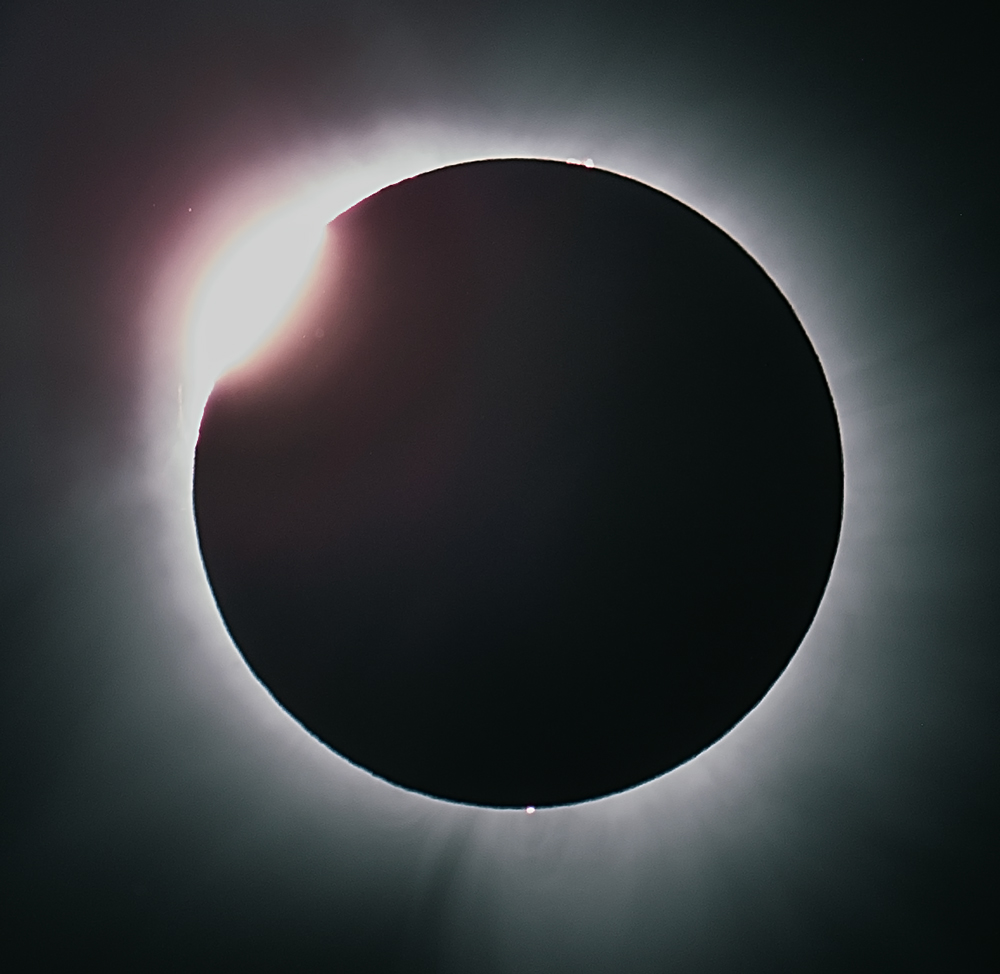 |
| Second contact Diamond Ring effect taken through the Stellarvue and Canon DSLR. Exposure 1/200 sec @ ISO 200 |
|
|
| Second contact Bailey's Beads effect taken through the Stellarvue with Canon DSLR. Exposure is 1/4000sec @ ISO 200 |
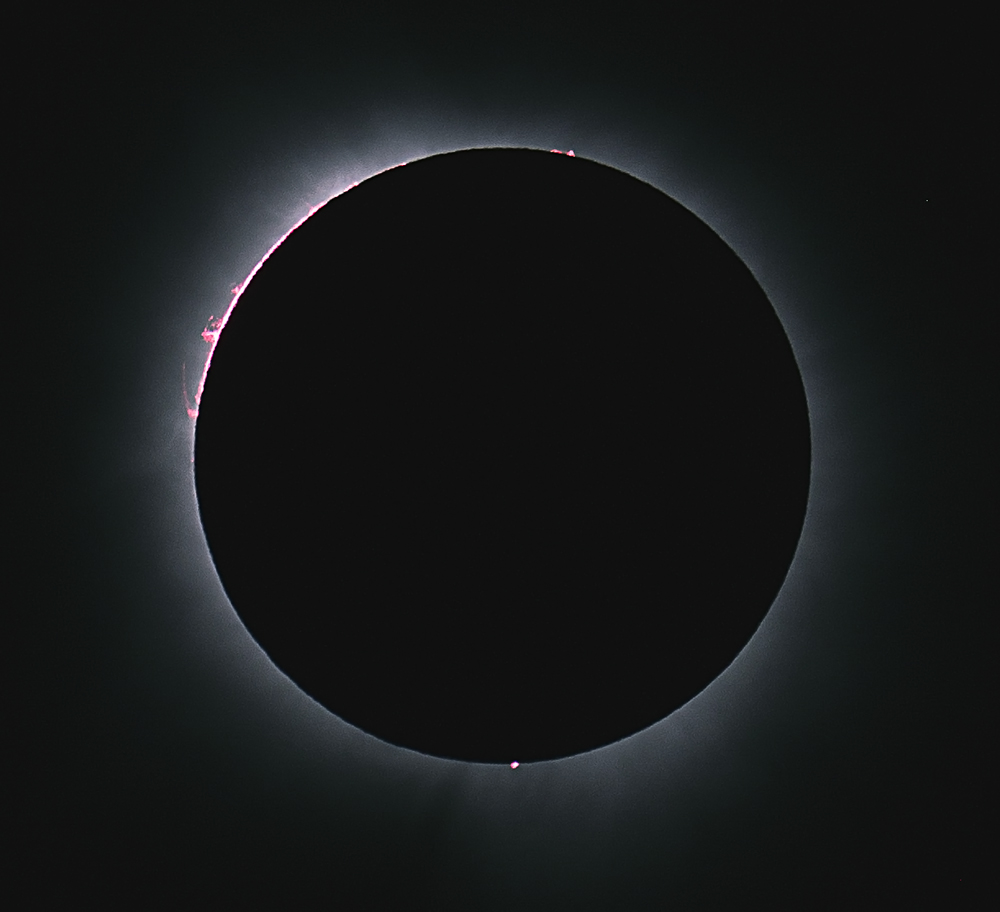 |
| Second contace Prominences taken through the Stellarvue and with the Canon DSLR. Exposure is 1/3200 0sec @ ISO 200 |
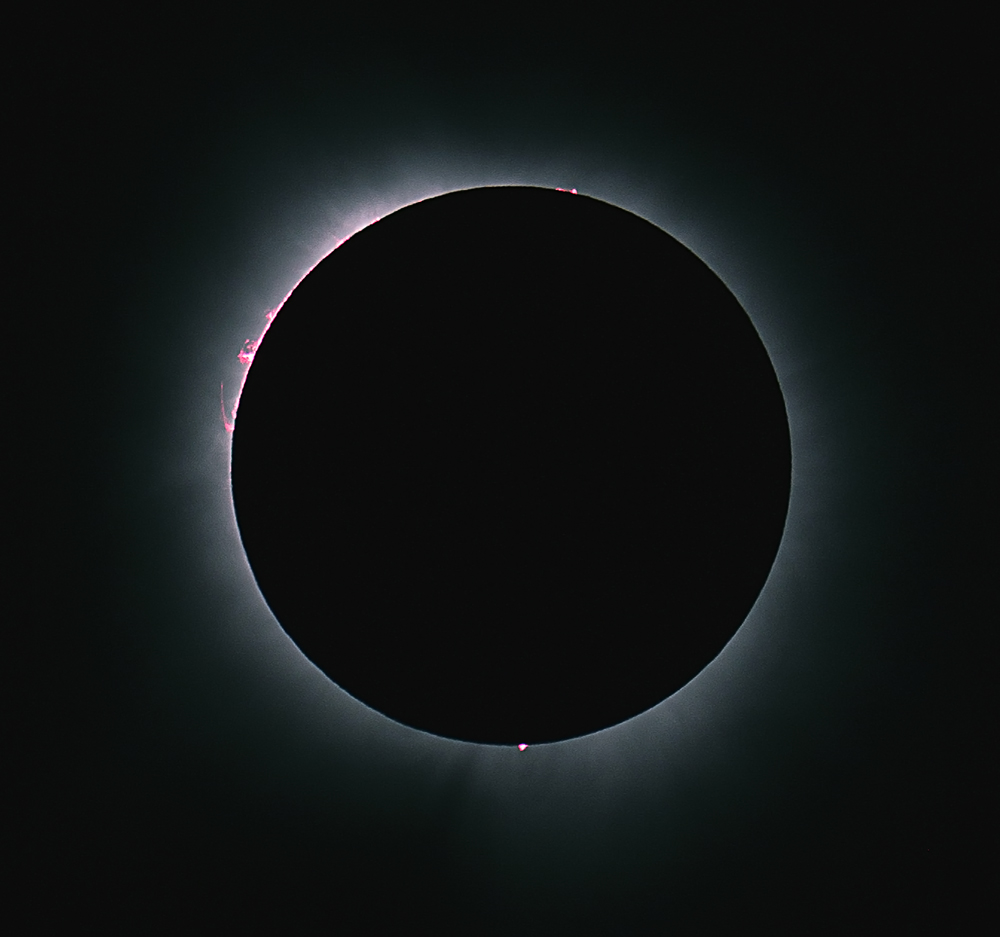 |
| Second contact Chromosphere taken through Stellarvue with Canon DSLR. Exposure is 1/4000 sec @ ISO 200 |
 |
| Third contact Chromosphere taken with Stellarvue and Canon DSLR. Exposure is 1/4000 sec @ ISO 200. |
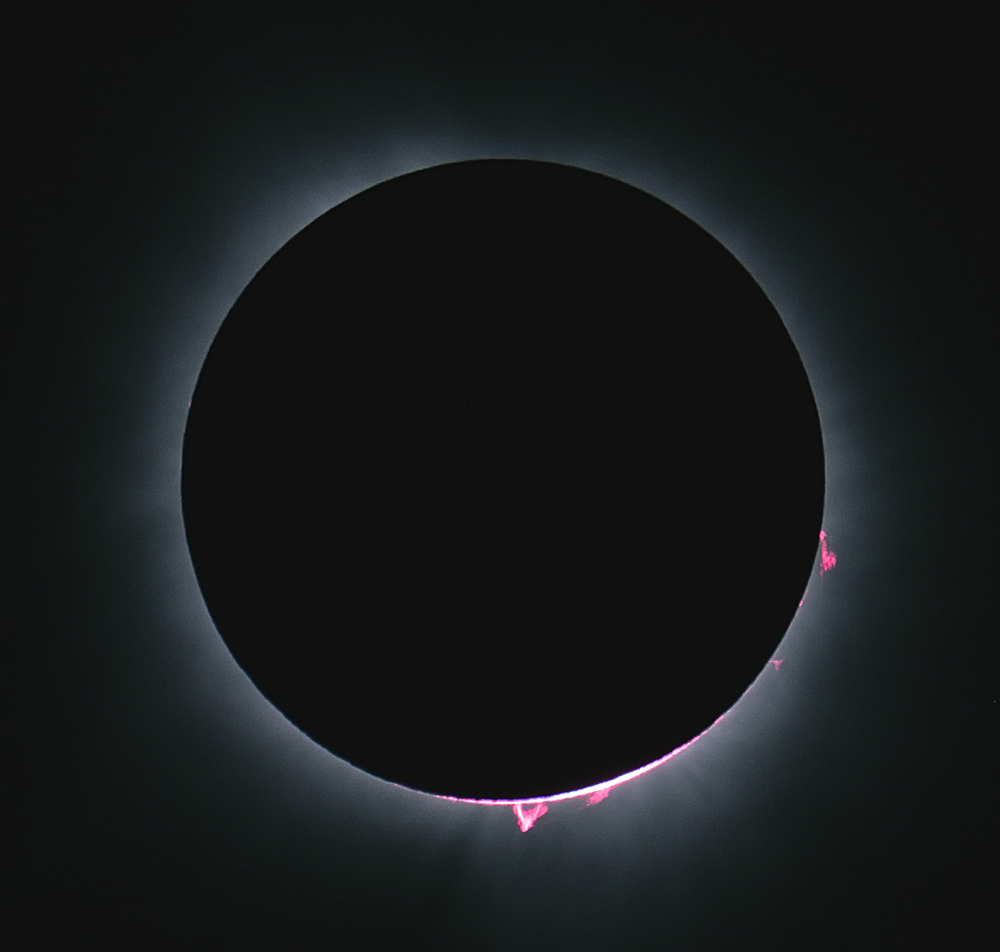 |
| Third contact Prominences with the Stellarvue and Canon DSLR. Exposure is 1/3200 sec @ ISO 400. |
 |
|
Third Contact Bailey's Beads effect with the Stellarvue and Canon DSLR. Exposure time 1/4000 sec @ ISO 200 |
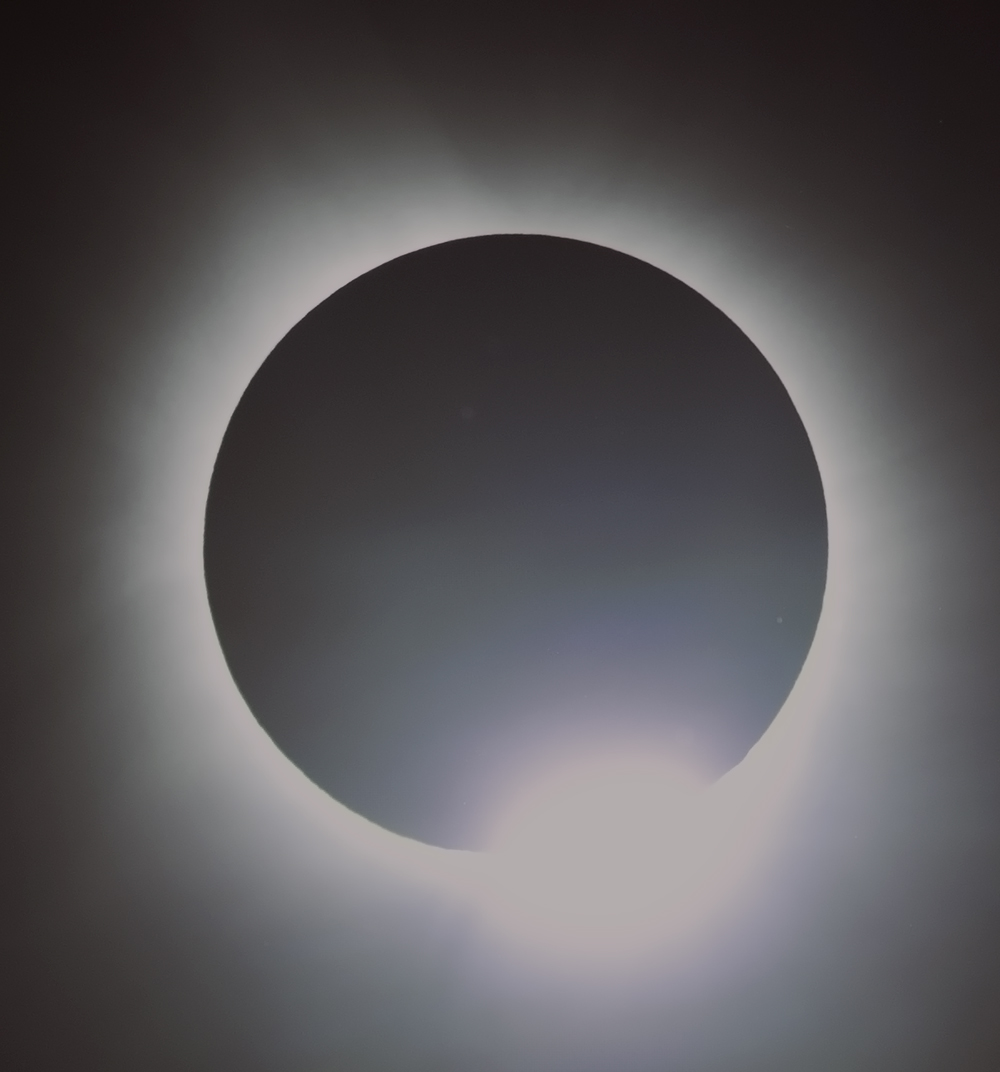 |
| Third contact Diamond Ring effect with the Stellarvue and Canon DSLR . Exposure time 1/200 sec @ ISO 200 |
 |
| Setup showing the SolarQuest mount with the Stellarvue 80mm scope, Laptop shade box, and Back-up Celestron mount. |
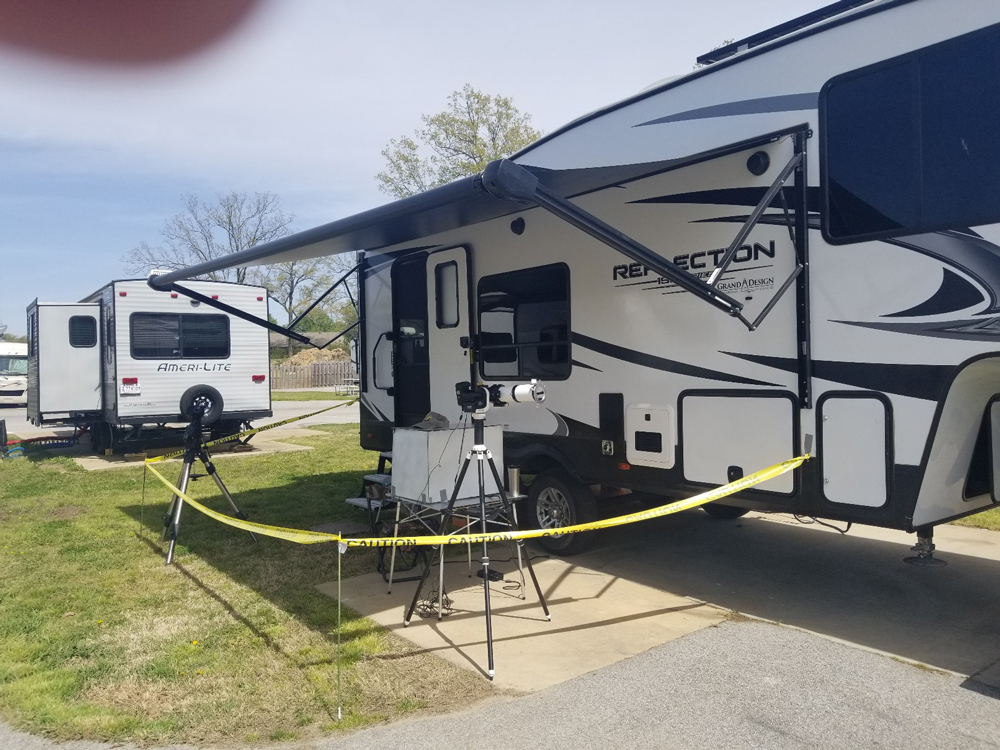 |
| Setup showing the SolarQuest mount with the Stellarvue 80mm scope, Laptop shade box, and Back-up Celestron mount. |
